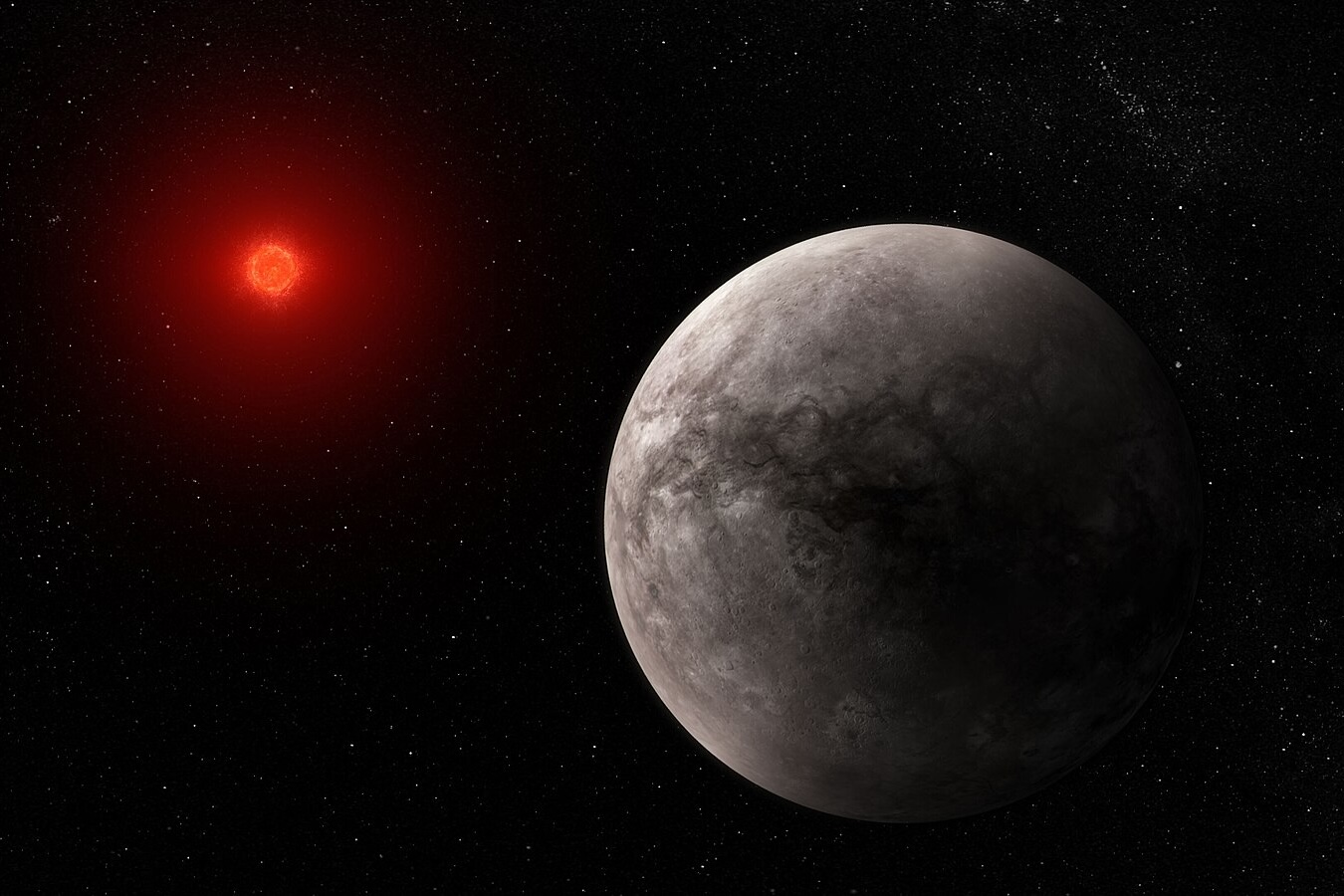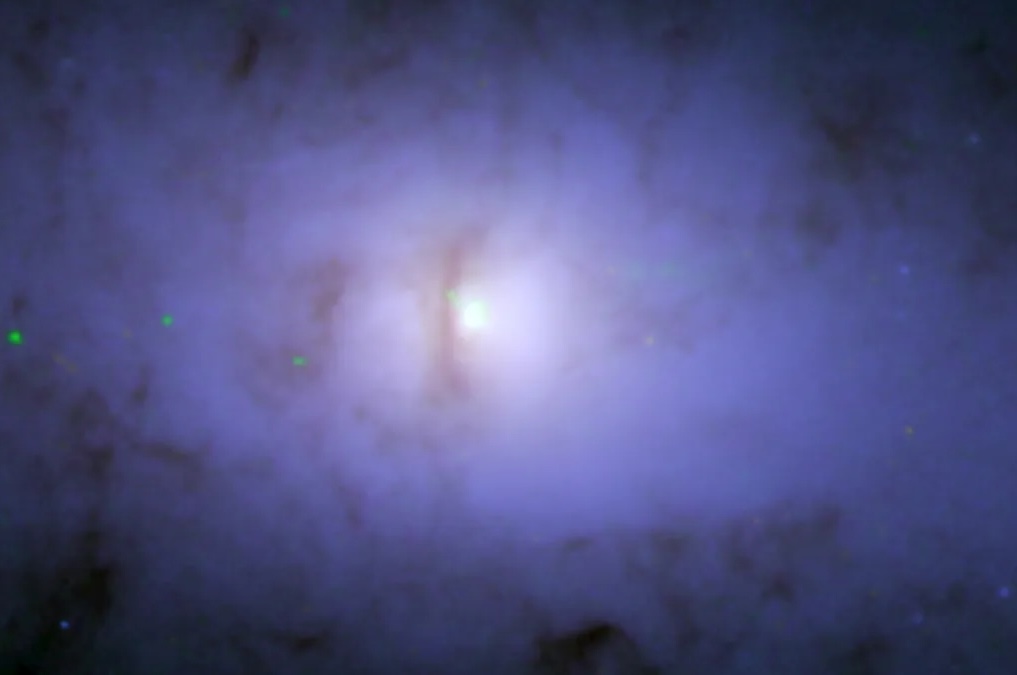In the journals JGR: Planets and JGR: Machine Learning and Computation, BAERI Research Scientist Ariel…
How BAERI Alum Lucia Kleint Caught a Stellar Solar-Flare Observation
By Jane Berg
No one could be certain that a flare would happen when and where it did. On March 29, 2014, BAERI alum Professor Lucia Kleint was performing observations of the Sun at the Richard B. Dunn Solar Telescope in New Mexico, hoping to observe a solar flare. At the same time, five other spacecraft (IRIS, SDO, SOHO, RHESSI, and Hinode) had been directed to observe the same region of the Sun as Kleint, each with their own set of capabilities in degrees of magnification and polarization. It was possible a flare would appear, and Kleint, alongside a team of scientists, wanted to capture as nuanced an image as possible. And with so many observatories employed simultaneously, there was a lot at stake.
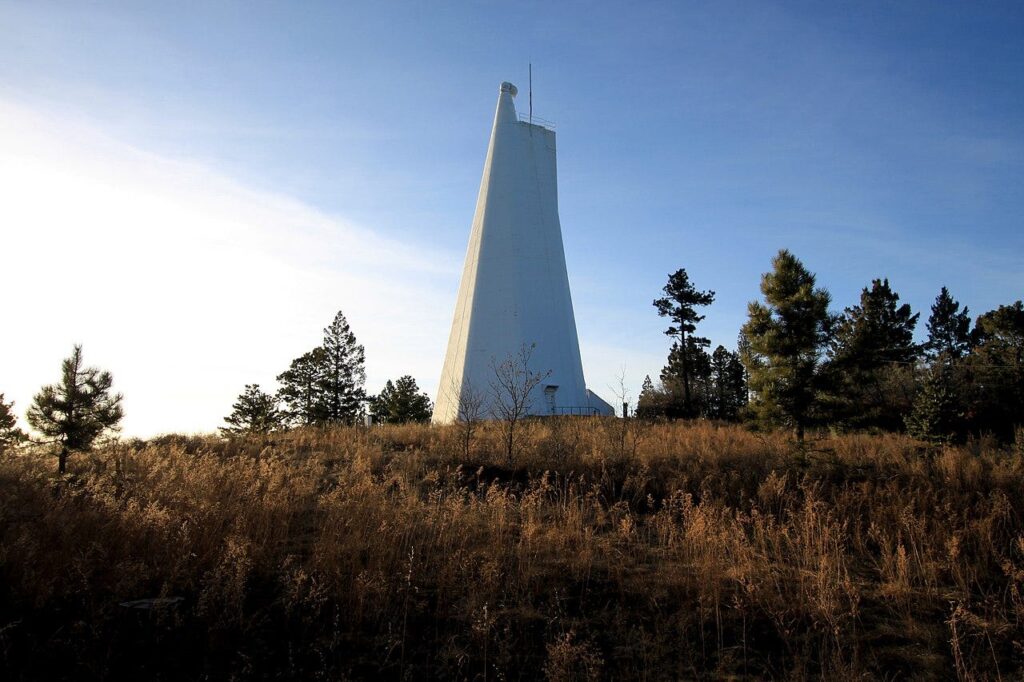
Sunset over the Dunn Solar Telescope in Sunspot, New Mexico. Image: Wikimedia Commons.
Situated in the aptly named Sunspot, New Mexico, the Sunspot Solar Observatory, where the Dunn Solar Telescope is located, is 9,200 feet up Sacramento Peak, with a sweeping view of pine-covered mountains and, more importantly, the clear sky. There, Kleint and her colleagues had spent the morning looking at one particularly active region on the Sun. They had created a mosaic of observations and had imaged one small flare. Unlike the nocturnal work done by most telescopes, solar observations from Earth need to be undertaken during the day and are best achieved in the mornings — once the ground heats up, warm air creates interference. Anticipating an afternoon slump in visibility, they were about to call it a day. Little did they know, something big was about to happen.

The Sun in relation to our galaxy. It is thought that there are between 100 billion and 400 billion stars in the Milky Way. Image: NASA / Wikimedia Commons.
How Solar Flares Affect Our Planet
The Sun is a star. This is such an obvious fact that heliophysicists say people often forget it’s true. Stars like our Sun are made up of scorching ionized gases, also known as plasma, and an immense magnetic field that keeps the plasma moving.
As the Sun’s magnetic field writhes and churns, a concentration of magnetism will sometimes collect in an area that we call a sunspot. Like a spring-loaded mechanism, these magnetic focal points can cause filaments of plasma to erupt from the Sun’s surface as solar flares or coronal mass ejections. If they happen to be facing Earth when they shoot out into the heliosphere, a tidal wave of radiation and particles are sent in our direction, a phenomenon called a geomagnetic storm.
Our atmosphere and magnetic field largely protect us from most of this radiation, also known as “space weather.” But electrical devices that use magnetism to induce an electric current can still be affected. A solar superstorm large enough and aimed precisely at us could envelop and warp Earth’s magnetic field, damage satellites and GPS, endanger astronauts in space, and overload electrical systems, causing widespread power failures. The blackout in Quebec in 1989 that was caused by a solar flare cut power to millions of people.
Kleint was interested in learning more about how the Sun’s magnetic field changes during a flare. A better understanding of the Sun’s magnetic field is not just interesting in theory but could help us predict these flares in the future.
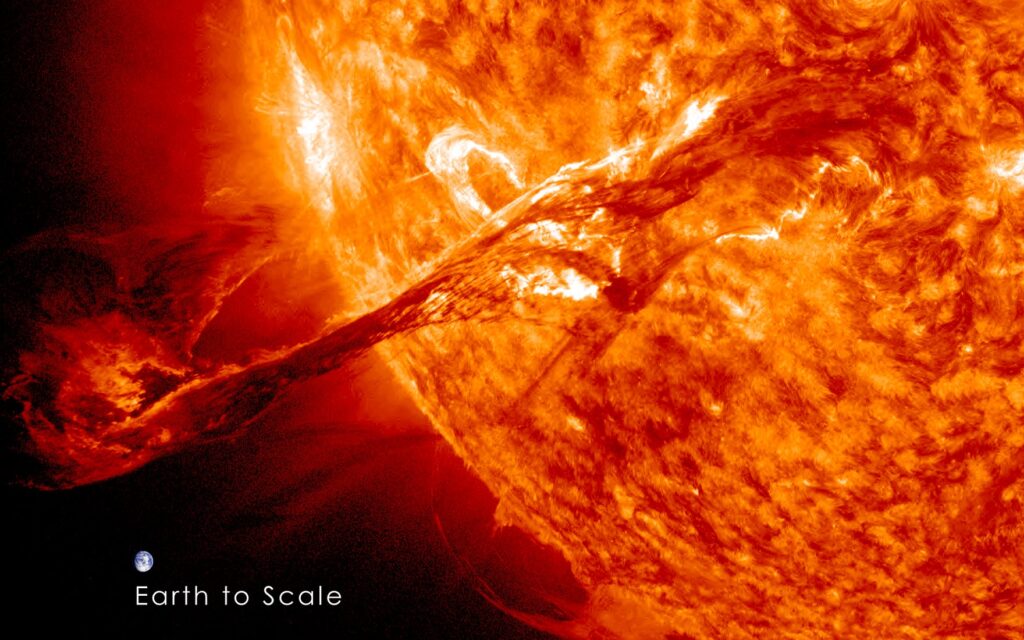
A representation of a large coronal mass ejection, its size relative to Earth. Image: NASA/GSFC/SDO.
The X-Flare
What Kleint and other scientists saw suddenly erupt from the Sun’s surface that day in 2014 is called an X-flare, one of the largest kinds of solar flares. The scale for measuring solar flares is logarithmic, like the Richter scale, and goes from small to large: A, B, C, M, and finally X. X-flares are often many times larger than Earth and can release energy equivalent to a billion hydrogen bombs. While the flare Kleint observed was nothing like the ’89 solar event in magnitude, it still had the potential to completely blow the exposure of the images the scientists were trying to capture.
“We couldn’t believe it. We were looking at the screen and it got brighter and brighter. We saw the curve going up, and by the time it passed the medium classification, I was running towards the camera to make sure that [it was] not just white.… It gets so bright you could overexpose it,” says Kleint, smiling as she recalls that pivotal moment. “I had to change the exposure time during the flare, and I didn’t leave that seat until it was finished. In total, about 7 to 8 minutes.”
Like a big camera, the Dunn telescope focuses light through a 100-meter-long tunnel and onto a primary mirror. When too much light enters, it can exceed the dynamic range of the imaging system, resulting in a loss of data, especially when it comes to the finer structures of a solar flare. While the five spacecraft mentioned earlier would still have captured the flare, losing information from the Dunn telescope would have been, in Kleint’s words, “really depressing.”
It was even more fortunate that the flare happened exactly when it did, because 10 minutes later, the IRIS satellite stopped observing that exact location — the IRIS team had assumed that work was about to wrap up for the day.
In the end, everything was OK. More than OK. It was an unprecedented observation of an X-flare by a ground-based observatory and coordinated observatories in space. The scientists were able to obtain an incredibly rich data set of the filament eruption. “We had the perfect data for several science questions that we wanted to answer,” says Kleint. “We had a big party that night.”


Left: BAERI alum Lucia Kleint. Right: Kleint at the Urania Observatory, where she sometimes does tours for the public. Images: Courtesy of Lucia Kleint.
Kleint went on to study those data for the next five years, and they inspired more than 20 research papers. “That day basically determined the direction of my career,” says Kleint, who is now an associate professor at the University of Bern, Switzerland, and vice director of the Zimmerwald Observatory.
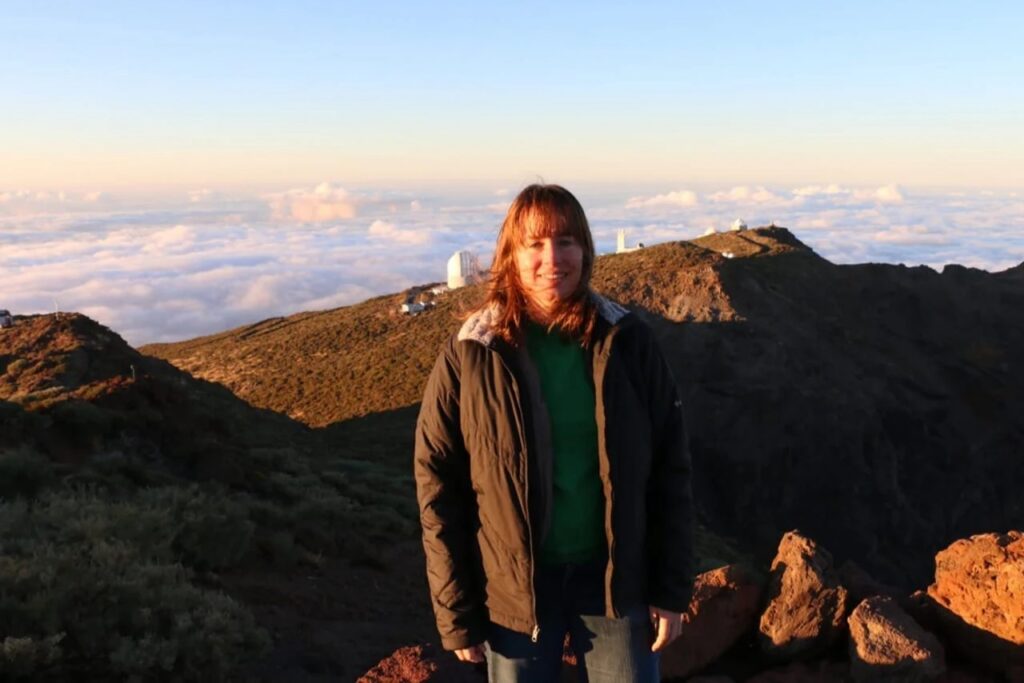

Left: Kleint near the Swedish Solar Telescope in La Palma, Spain. Image: Courtesy of Lucia Kleint. Right: Image of the X-flare captured by Kleint and her colleagues at the Dunn Solar Telescope in New Mexico, alongside coordinated spacecraft observations, on March 29, 2014. Image: NASA/Lucia Kleint.
These days, Kleint’s work is mostly concerned with how machine learning can improve the prediction of solar flares. She believes that a lot is possible once artificial intelligence is trained with the substantial datasets from the research group she leads, alongside some of the satellite data captured during the 2014 flare.
“Machine learning is going extremely fast,” says Kleint, explaining that the exact same principle behind the language learning model, the ability to predict the next word in a sentence, could be used with images in order to predict the next major solar event. One day, Kleint would like to have a computer model of the whole Sun that could estimate flares with precision. “It would tell me, ‘OK, look here. In an hour, this region will erupt.’”
Meanwhile, there’s still so much we don’t understand about the Sun’s complex nonlinear processes and its magnetic activity, which scientists do not have a precise way to measure. So it will take time before we have a warning system for solar flares similar to those we have in place for volcanoes and other natural disasters. Fortunately for solar scientists, we are currently in a phase called solar maximum, the peak of the Sun’s 11-year cycle, so they will have more opportunities to study flares in the near future.

Visualization of solar particles from a coronal mass ejection reaching Earth and interfering with the planet’s magnetic field. Image: NASA Goddard.


